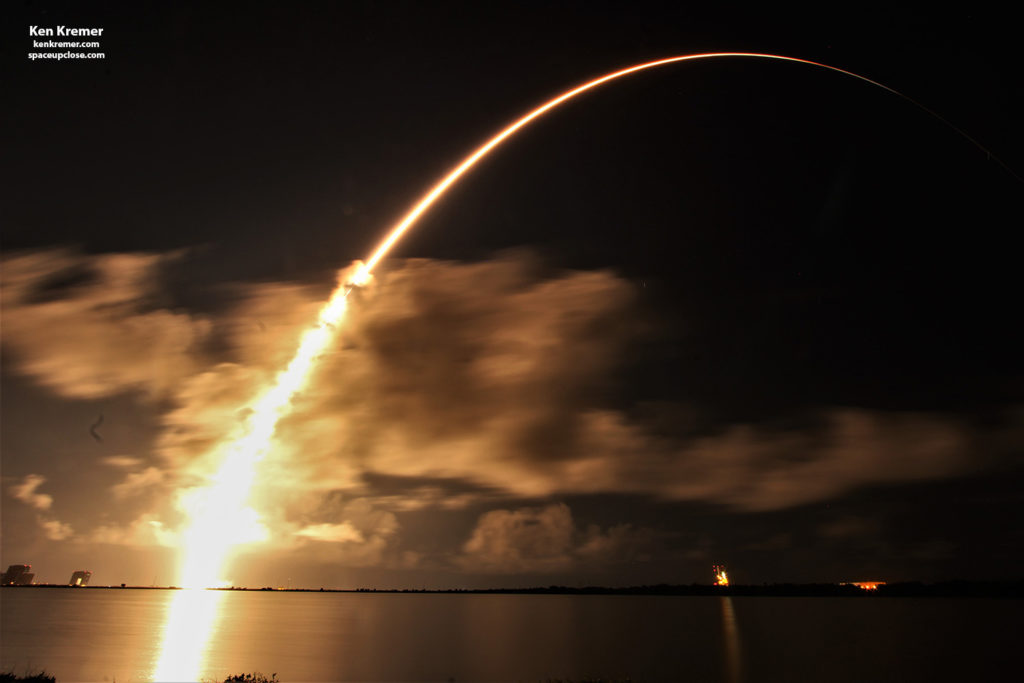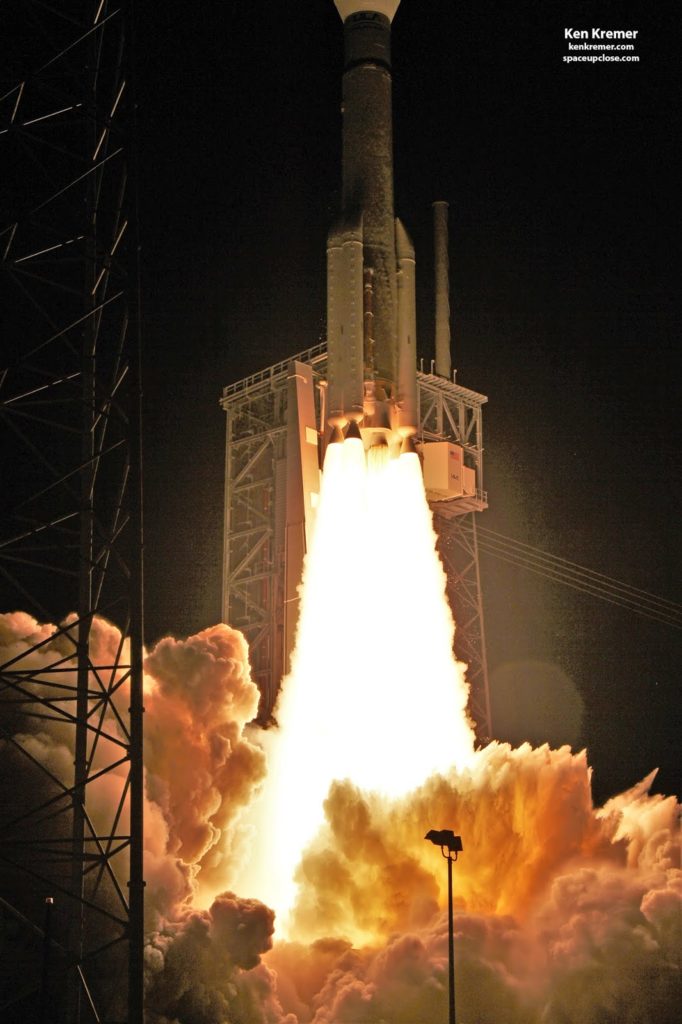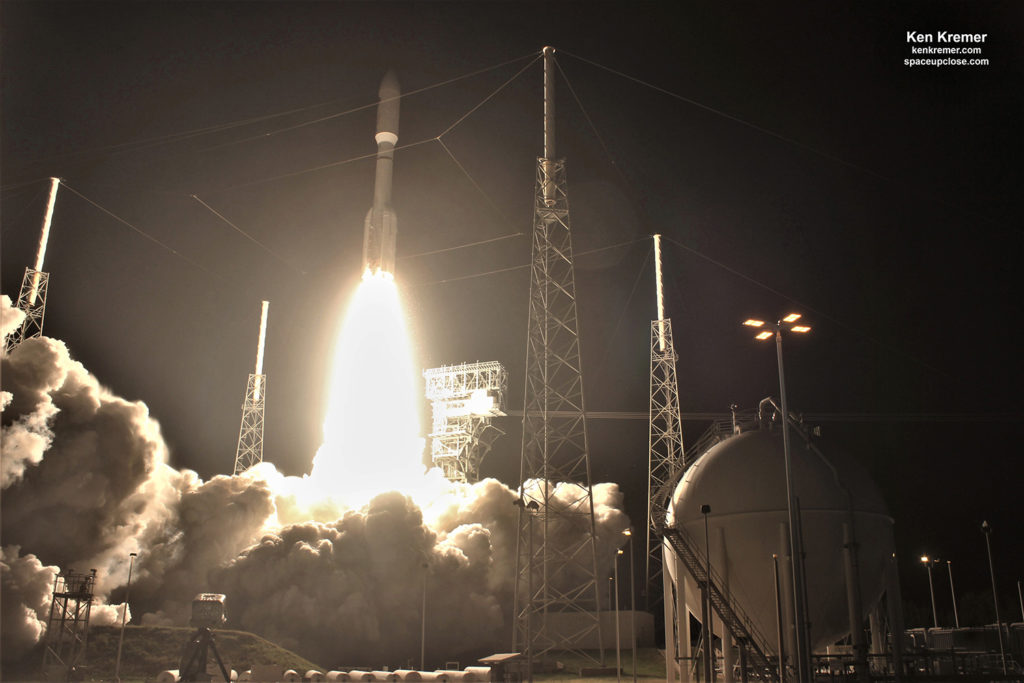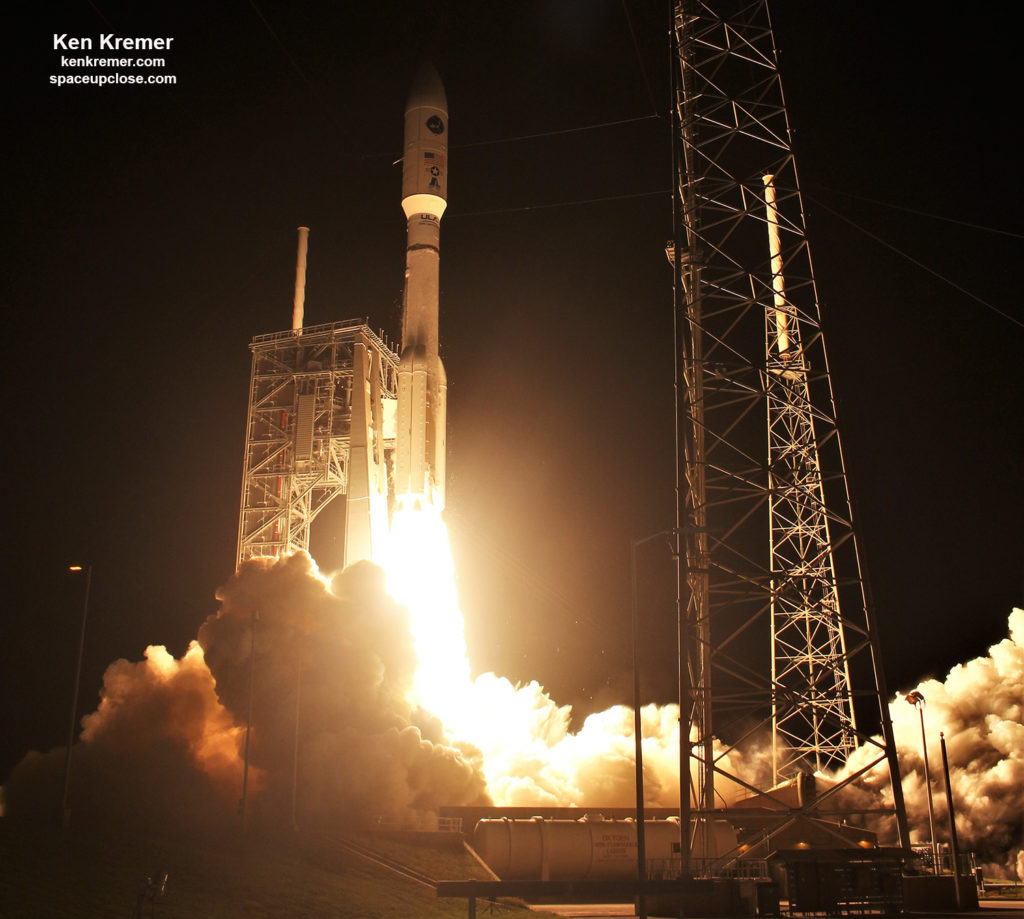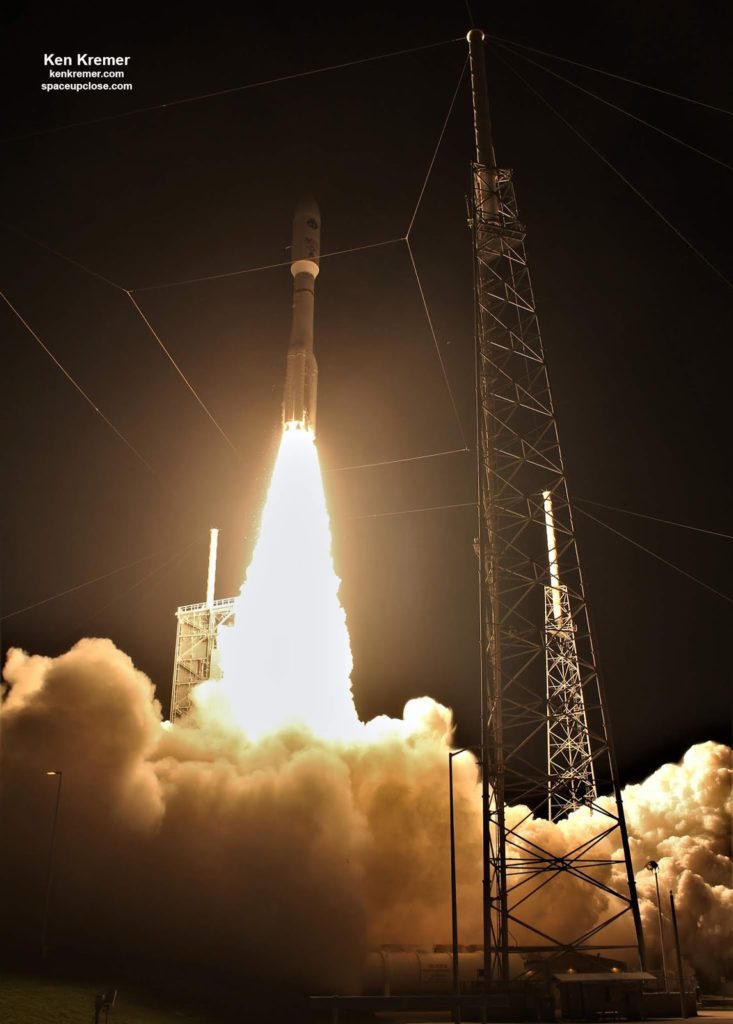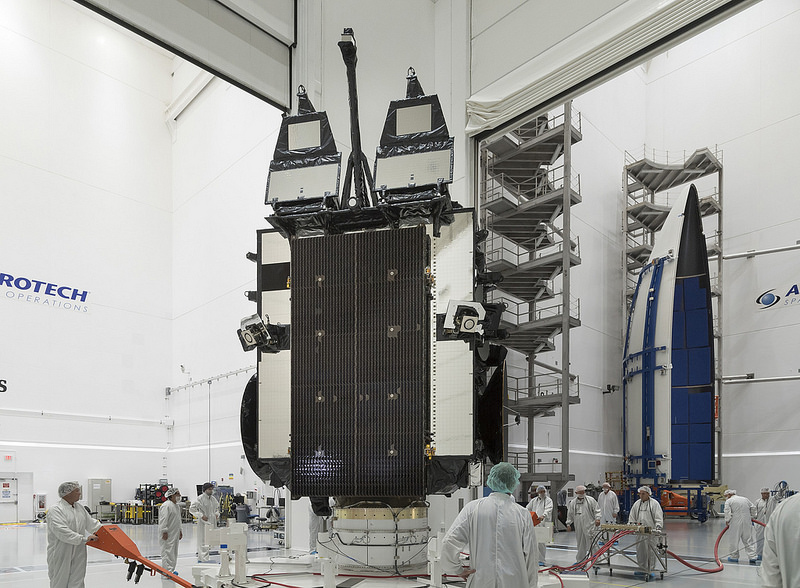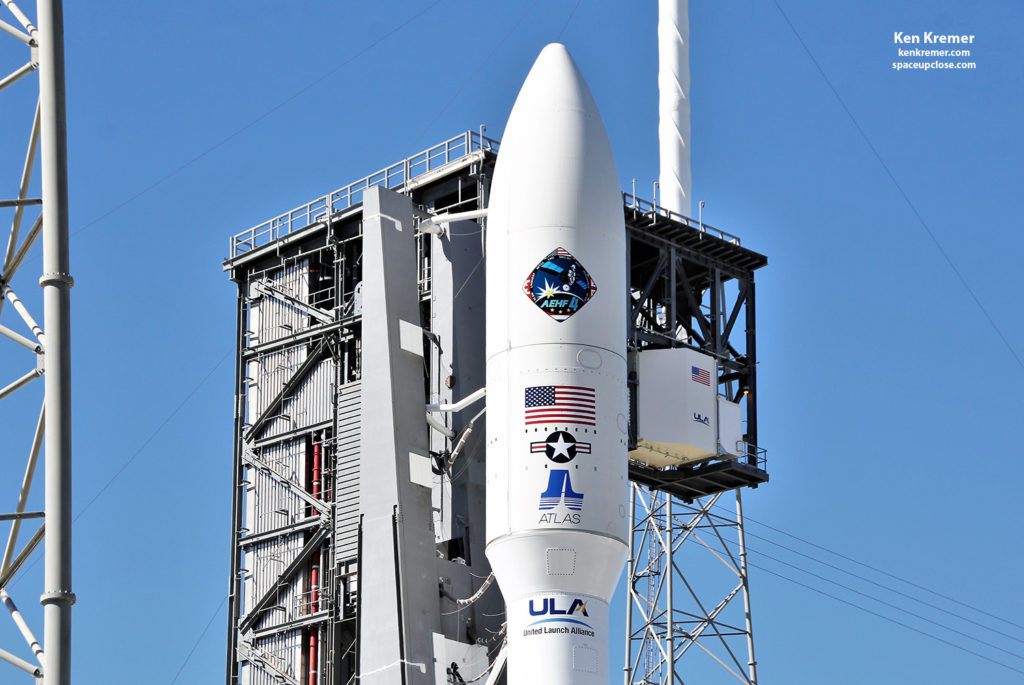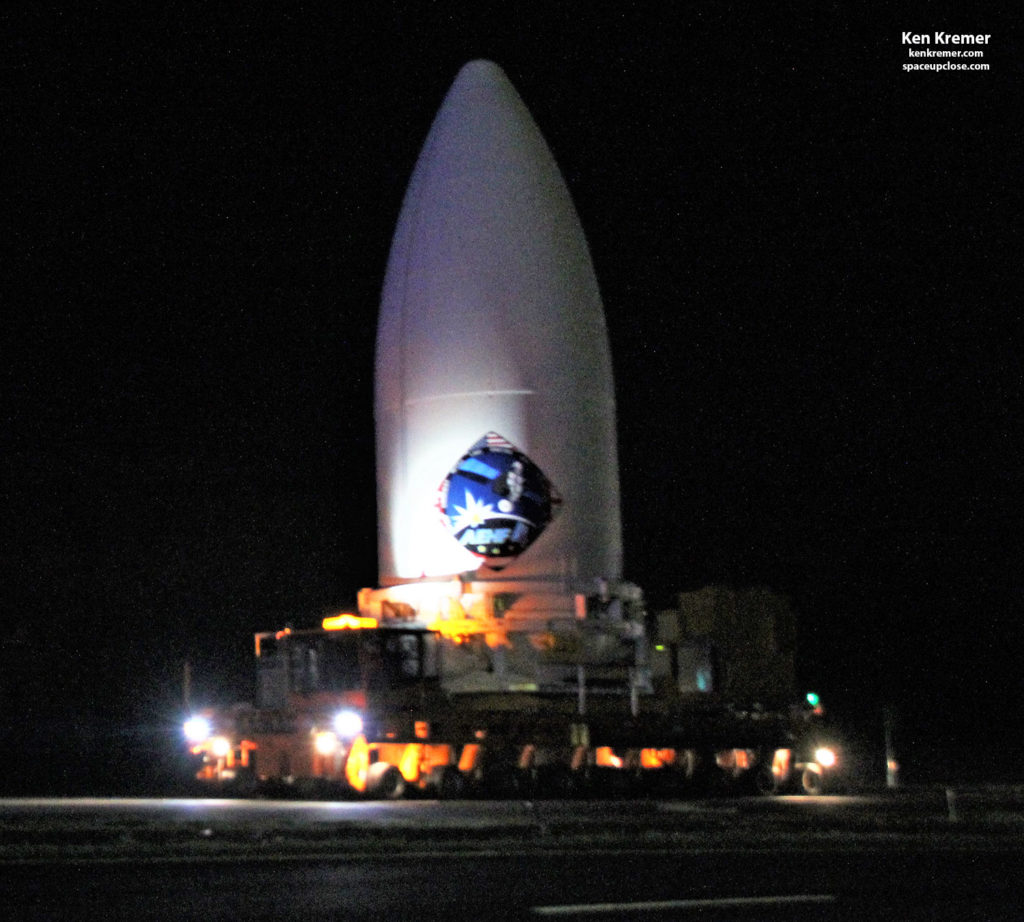— SpaceUpClose.com — 17 October 2018
CAPE CANAVERAL
AIR FORCE STATION, FL – A United Launch Alliance (ULA) Atlas V made a
magnificent midnight march to orbit after a flawless launch early this morning from
the Florida Space Coast and successfully delivering the fourth Advanced
Extremely High Frequency (AEHF-4) communication ssatellite to orbit for the U.S. Air Force that will provide secure jam-resistant
military relay communications for US troops across
the globe during peacetime and in war in case of a nuclear attack.
The
20-story tall ULA Atlas V rocket carrying the $1.8 Billion Lockheed Martin built
AEHF-4 military satcom mission for the U.S. Air Force Space Command lifted off
from Space Launch Complex-41 precisely on time, Wednesday, Oct. 17 at 12:15
a.m. EDT from Cape Canaveral Air Force Station, FL.
AEHF-4 thus joins and
expands the existing constellation of three nuclear-hardened AEHF Space Command satellites already
operating in geostationary orbit 22,300
miles (36000 kilometers) above Earth to four – from past Atlas V deliveries. Eventually a constellation of six is planned.
“ULA’s
unparalleled record of successfully launching and placing payloads in orbit
signifies our profound commitment to national defense,” said Tory Bruno, ULA
president and CEO, in a statement.
“We
remain the only launch provider capable of placing our customers’ payloads into
any national security space orbit, anytime, which we’ve proudly exhibited
through 50 launches for the U.S. Air Force.”
critical capabilities,” the Air Force tweeted.
Nearly pristine
weather conditions greeted the rocket launch and provided spectators with
spectacular viewing as the Alas V engines ignited and roared to life thereby instantly
turning night to day.
Check out our gallery
of Space UpClose launch and launch pad photos for your enjoyment.
The most powerful variant
of the venerable ULA Atlas V quickly soared off the pad and brilliantly illuminated
the scattered low hanging clouds on the walloping power of 2.6 million pounds
of liftoff thrust spewing from the first stage RD-180 engine nozzles and augmented
with five strap on solid rocket boosters on its way to an initial geostationary
transfer orbit (GTO).
The bright flames
were visible for more than four minutes as the rocket arced over on an easterly
trajectory towards Africa.
The five spent solid
rocket boosters were jettisoned at 1 minutes 50 seconds into flight and the
Swiss-made fairing was jettisoned about three and a half minutes after liftoff.
trio of Centaur main engine burns the 6.8 ton AEHF-4 spacecraft separated as
planned from the Centaur upper stage approximately 3 hour and 32 minutes after
liftoff.
“The vehicle performed successfully during
its three-and-a-half-hour mission, which included three Centaur burns,” said
ULA.
“T+plus 3 hours,
32 minutes, 54 seconds. SPACECRAFT SEPARATION! The Advanced Extremely High
Frequency-4 communications satellite has been deployed into space by the Atlas
V rocket’s Centaur upper stage for U.S. national security.”
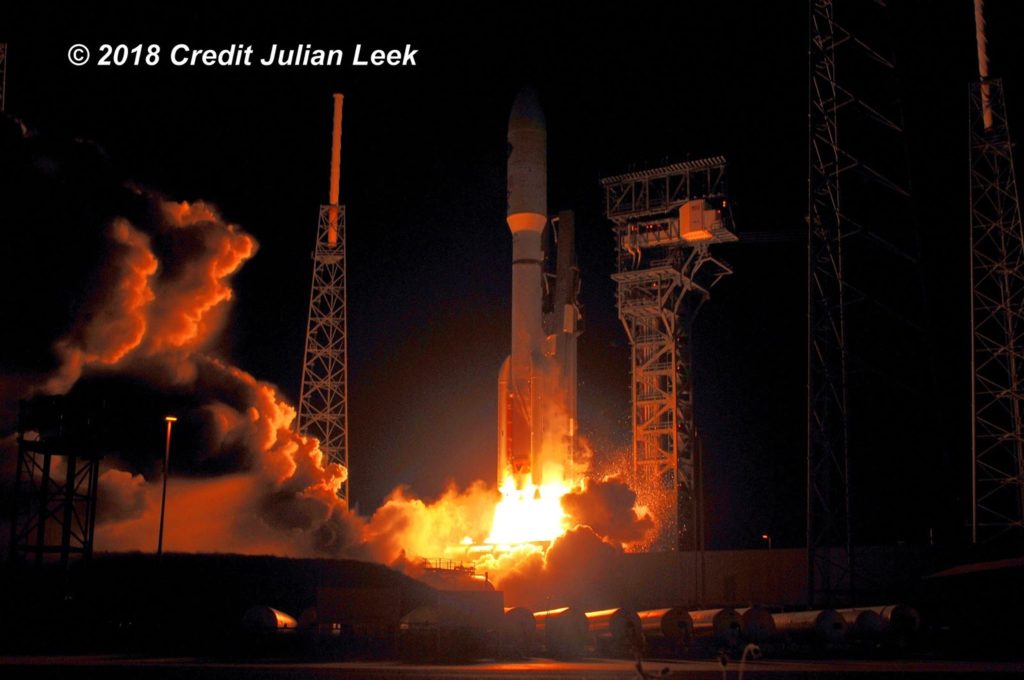 |
|
Launch of AEHF-4 on
ULA Atlas V for USAF on Oct. 17, 2018 from Space Launch Complex-41 on Cape Canaveral Air Force Station, Florida. Credit: Julian Leek |
“Lockheed Martin confirmed signal
acquisition at 3:47 a.m. ET,” Lockheed Martin reported to confirm they
were in communication with spacecraft and it is in good health and operation as
expected.
The launch was webcast live by ULA.
“The
mission of AEHF is to provide survivable protected communications for the
military’s high-priority assets on the ground, at sea and in the air,”
Maj. Matthew Getts of the Air Force’s Space and Missile Center in Los Angeles
said during the webcast. “It also enables the president of the United
States and combatant commanders to control their tactical and strategic forces
through all levels of war and all phases of conflict.”
“It’s good to return with our
mission partners to see the culmination of expertise, skill and partnership
that we have worked diligently toward to make this AEHF launch a success,”
said Mike Cacheiro, vice president of Protected Communication Systems at
Lockheed Martin.
“This is a substantial
milestone for AEHF, and as we look ahead, we continue to improve and upgrade
this mission to deliver these vital communications capabilities to the Air
Force.”
ULA flew their 197
foot tall (60 m) workhorse Atlas V rocket in the commanding 551 configuration
which comprises a LOX & RP-1 kerosene-fueled common core booster powered by
a Russian-made RD-180 main engine, a five-meter-diameter payload fairing
built by RUAG Space in Switzerland, five first stage AJ-60A
strap-on solid rocket
motors built by Aerojet-Rocketdyne and a single RL-10C engine LOX & LH2
fueled Centaur upper stage.
Today’s launch marked only the 9th
time the 551 Atlas V configuration has flown and they have all been vital for
US national security and NASA science missions.
“The 551 rocket has
launched groundbreaking missions for our nation—from the critically important
Mobile User Objective System (MUOS) constellation to historic science missions
including New Horizons, the first mission to Pluto, and the Juno mission to
Jupiter,” noted ULA.
“Over the past 12
years, the men and women of ULA have reliably delivered dozens of Air Force
payloads into orbit from GPS to WGS, and SBIRS to AEHF,” said Gen. Jay Raymond,
commander of Air Force Space Command, in a statement. “ULA’s unprecedented 100
percent launch success has directly contributed to our national security.
Congratulations to the entire launch team on a successful 50th launch for the
U.S. Air Force.”
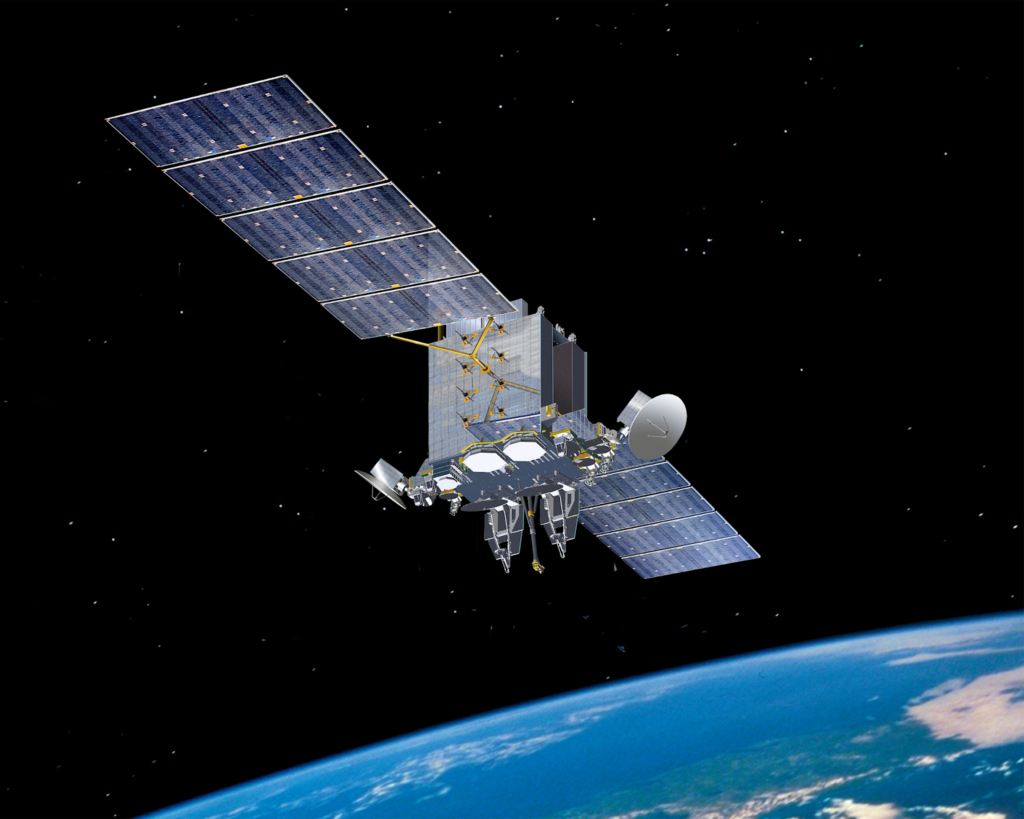 |
|
Artists concept of Advanced Extremely High
Frequency military communications satellite in orbit for US Air Force Space Command. Credit: USAF |
AEHF-4 counts as the
newest and most advanced US Air Force jam-resistant protected military
communications satellite and will play a vital role in U.S. national security.
AEHF provides survivable,
global, highly secure, protected, and jam-resistant communications for
high-priority military ground, sea, and air assets, between
U.S. national leadership [meaning the President] and deployed military forces, says USAF Space Command.
times the throughput and a substantial increase in coverage compared to the
1990s-era Milstar satellites” that it replaces and are currently in
orbit.
prime contractor Lockheed Martin at the satellite integration facility in
Sunnyvale, California, based on the A 2100 series communications satellite
spacecraft model and has a mass of some 6100 kg (13600 pounds). Payload components were built by Northrop Grumman.
The Atlas V delivered AEHF-4 to geostationary transfer orbit (GTO)
on a specialized trajectory to minimize the spacecrafts subsequent orbit adjusting
maneuvers by doing a longer firing of the Centaur upper stage to raise the perigee.
“Interesting
trajectory tonight”, tweeted ULA CEO Tory Bruno.
“All
our orbits are customized. This is a GTO, but we will coast for several hours
out to apogee and then do a major lift of the perigee. This will leave the
spacecraft with only a small amount of remaining energy to add in order to
circularize.”
The
beneficial by-product will be a significantly longer lifetime for the satellite
since it will be left with extra kilos of bonus residual maneuvering fuel.
To achieve
this the Air Force also decided to add two additional first stage solid boosters
and fly the 551 configuration compared to the use of the 531 for the earlier satellites
in the AEHF constellation. Two follow-on AEHF satellites will also fly with the
551 variant.
“AEHF-4 was
originally slated to ride on an Atlas V in the 531 configuration,” said the Air
Force in a statement.
“The Air
Force moved to change AEHF-4 and the remaining two AEHF satellites’ launch
vehicles to the 551 configuration by adding two additional solid boosters. This
was identified as an opportunity to maximize chances for mission success over
the lifetime of the space vehicles. This decision is a direct recognition of
the critical support AEHF is required to provide to our warfighters and
national leaders through potential future conflicts.”
 |
|
A United Launch
Alliance Atlas V rocket carrying the AEHF-4 milcomsat for the U.S. Air Force is poised for midnight liftoff to GTO on Oct. 17, 2018 at 12:15 a.m. ET from Space Launch Complex-41 on Cape Canaveral Air Force Station, Florida on a national security mission. Credit: Ken Kremer/kenkremer.com/spaceupclose.com |
AEHF-4 supplements the
existing constellation of three satellites launched earlier on ULA Atlas V rockets; AEHF-1 in 2010, AEHF-2 in 2012 and
AEHF-3 in 2013 – all utilizing the 531 configuration using 3 first stage solid
rocket boosters vs. 5 solids for AEHF-4.
The new satellite expands that
constellation of three Air Force Space Command AEHF satellites to four –
operating in geostationary orbit 22,300
miles (36000 kilometers) above Earth in a ring around the planet.
Two additional AEHF satellites
are under construction by Lockheed Martin and are expected to launch in 2019 and
2020 to round out the system to a six-satellite constellation.
A major milestone was achieved with the first 3
AEHF satellites when the Initial Operational Capability (IOC) for the Advanced
Extremely High Frequency system was declared on July 28, 2015 by General John
Hyten, Air Force Space Command commander.
The Air Force’s 4th Space Operations Squadron operates the AEHF
system, supporting warfighters around the world.
It provides
continuous 24-hour coverage between 65 degrees north and 65 degrees south
latitude.
The AEHF satellites are
equipped with 2 SHF Downlink Phased Arrays, 2 Crosslinks, 2 Uplink/Downlink
Nulling Antennas, 1 Uplink EHF Phased Array, 6 Uplink/Downlink Gimbaled
Dish Antenna, 1 Each Uplink/downlink earth coverage horns.
The data rate capability
ranges from 75 bps to approximately 8 Mbps.
The AEHF system includes
international partners from the United Kingdom, Canada and the Netherlands.
This was the131st mission for ULA since the
company was founded in 2006 and the 50th launch for the Air Force. It is the
79th for an Atlas V rocket and the 9th in the 551 configuration.
This also counts as the fifth and final Atlas
V launch of the year and ULA’s 8th launch overall for 2018.
ULA’s
next launch is the NROL-71 mission for the National Reconnaissance Office on a
Delta IV Heavy rocket. The launch is scheduled for Nov. 29 from Space Launch
Complex-6 at Vandenberg Air Force Base, California.
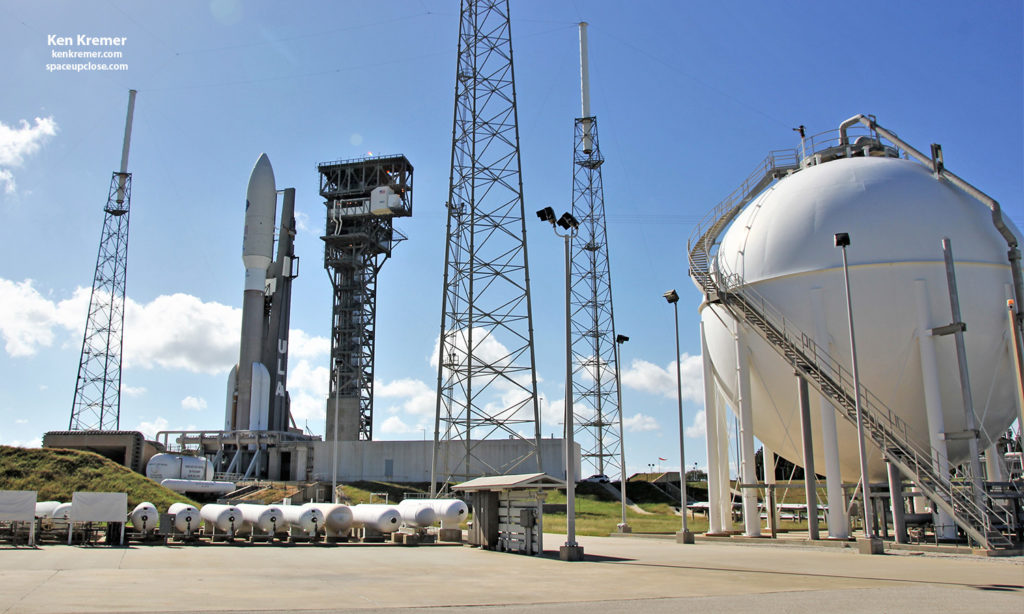 |
|
A United Launch
Alliance Atlas V rocket carrying the AEHF-4 milcomsat for the U.S. Air Force is poised for midnight liftoff to GTO on Oct. 17, 2018 at 12:15 a.m. ET from Space Launch Complex-41 on Cape Canaveral Air Force Station, Florida on a national security mission. Credit: Ken Kremer/kenkremer.com/spaceupclose.com |
Watch for Ken’s
continuing onsite coverage of NASA, SpaceX, ULA, Boeing, Lockheed Martin,
Orbital ATK and more space and mission reports direct from the Kennedy Space
Center, Cape Canaveral Air Force Station, Florida and Wallops Flight Facility,
Virginia.
Stay tuned here for Ken’s continuing Earth and Planetary science
and human spaceflight news: www.kenkremer.com –www.spaceupclose.com –
twitter @ken_kremer – email: ken at kenkremer.com
Dr. Kremer is a research
scientist and journalist based in the KSC area.
………….
Ken’s photos are for sale and he is available for lectures and outreach events
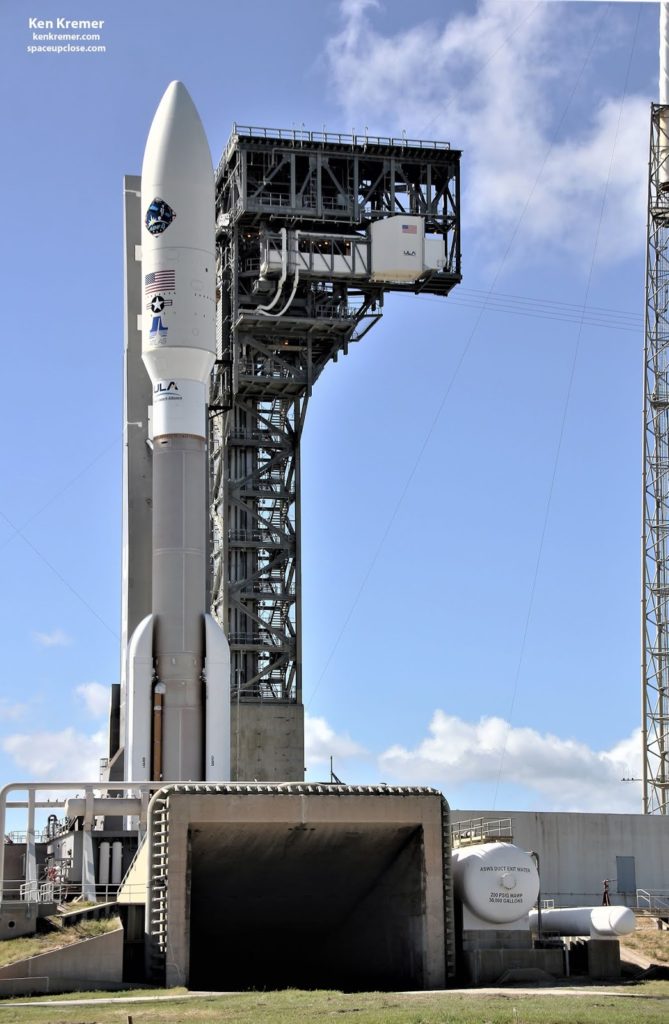 |
| Credit: Ken Kremer/kenkremer.com/spaceupclose.com |


